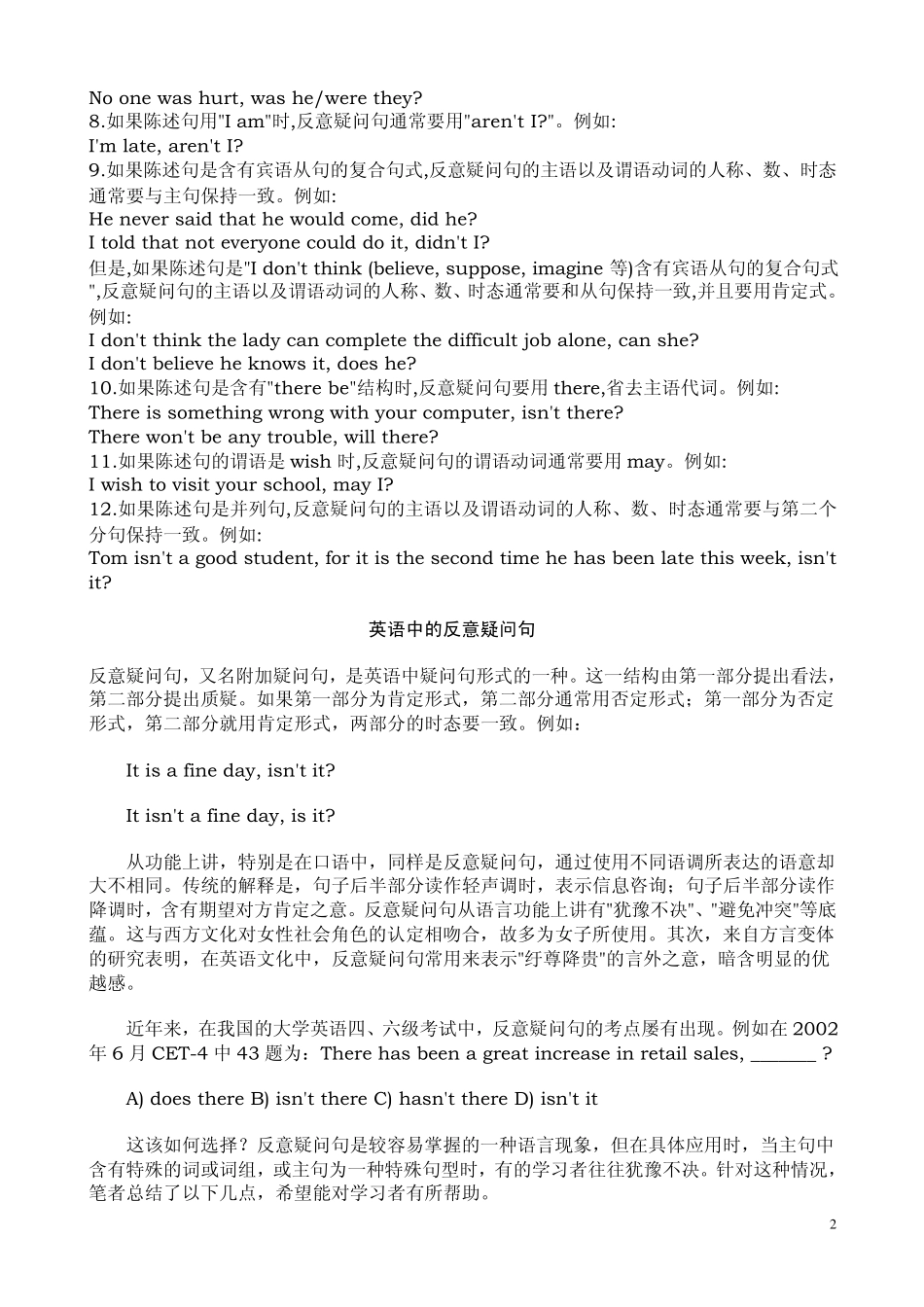1 否定疑问句的构成和用法 反意疑问句是在陈述句后边加上一个简短问句,对陈述句所叙述的内容提出相反的疑问,这种句子就叫作反意疑问句。反意疑问句可以表示真实的疑问,也可以表示提问人的倾向、强调或反问。如果陈述句是肯定句时,后边的反意疑问句通常要用否定式;反之,如果陈述句是否定句时,后边的反意疑问句通常要用肯定式。陈述句和后边的反意疑问句的主语以及谓语动词的人称、数、时态通常要保持一致。例如: He speaks English, doesn't he? Mary won't do it, will she? Lies cannot cover up the facts, can they? 回答反意疑问句和回答一般疑问句一样,肯定回答用"Yes, +肯定结构";否定回答用"No, +否定结构"。这与汉语习惯有所不同。例如: -He's a doctor, isn't he?他是医生,对吧? -Yes, he is.对,他是医生。(No, he isn't.不,他不是医生。) -He isn't a doctor, is he?他不是医生,对吧? -Yes, he is.不,他是医生。(No, he isn't.对,他不是医生。) 在使用反意疑问句时,特别要注意以下几点: 1.当动词 have 作"有"讲时,可以有两种反意疑问句形式。例如: He hasn't any sisters, has he? He doesn't have any sisters, does he? 当 have 表示其它含义(如:经历、遭受、得到、吃……)讲时,只有一种反意疑问句形式: You all had a good time, didn't you? He often has colds, doesn't he? They had milk and bread for breakfast, didn't they? 2.如果陈述句的谓语动词含有 have to, had to 时,反意疑问句通常用其适当形式。例如: We have to get there at 8 a.m. tomorrow, don't we? They had to take the early train, didn't they? 3. need 和 dare 既可以作情态动词,又可以作实义动词,注意有两种反意疑问句形式。例如: You needn't hand in your paper today, need you? You don't need to hand in your paper today, do you? He dare ask the teacher, daren't he? He doesn't dare to ask the teacher, does he? 4.如果陈述句的谓语动词含有 used to 时,也可以有两种反意疑问句形式。例如: He used to live in London, usedn't/ didn't he? 5.如果陈述句中出现 never, seldom, hardly, scarely, rarely, few, little, nobody, no one, nothing ...


